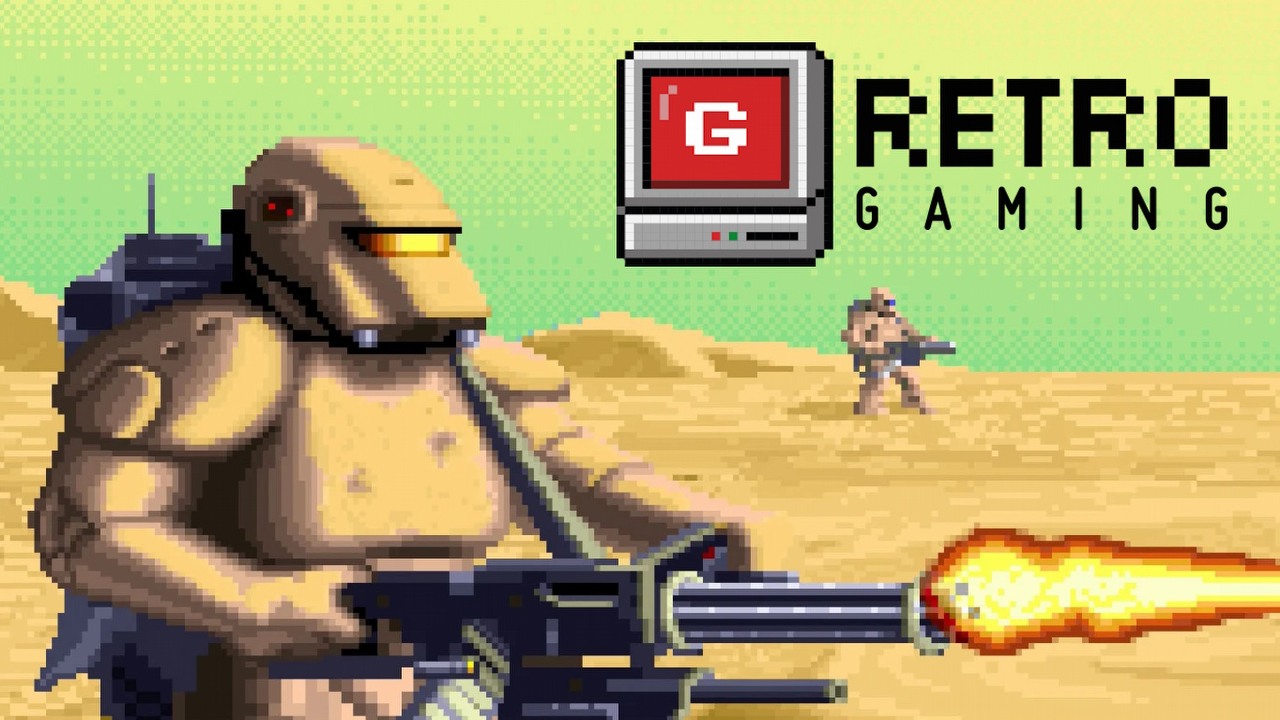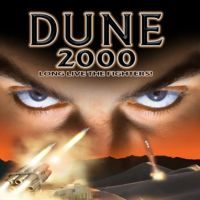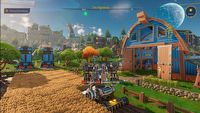Dune II by Westwood Was Revolutionary. The RTS Genre Was Born on Arrakis
Diuna: Part Two is triumphing in theaters, so it's time to reminisce about another Diuna with two in the title, namely the legendary Dune II by Westwood studios.
2

On the occasion of the cinema premiere of the film Dune: Part Two, we have prepared for you a retro gaming article devoted to one of the best game adaptations of this franchise. Let's just mention that before that game appeared, ground was laid by Emperor: Battle for Dune and Dune released by Cryo studio in 1992. The most important game set in the universe created by Frank Herber was, however, Dune II and its successor, Dune 2000.
Dune II, the most important RTS in history
Dune II released in 1992 on PC, and was converted a year later for the Sega Mega Drive console and Amiga computers. The production was developed by Westwood studio and despite the title, it wasn't really a sequel to Cryo studio's production.
Dune II was a real-time strategy in which we collected spice, built bases, constructed units and used them to fight our rivals. There were three factions to choose from -- the houses of Atreides, Harkonnen, and Ordos; the latter was an original creation of Westwood studio.

Today the game seems very simple. It lacks the ability to issue commands to multiple units at the same time. The artificial intelligence is also exceptionally primitive, unable to rebuild destroyed defensive structures or conduct flanking attacks, and always storms our bases from the direction straight of its command center. Interestingly, by analyzing the game's code, fans discovered that in reality the AI is capable of much more complex tactics, but they were truncated because Westwood couldn't fix the errors they caused in time.
These shortcomings are obvious with the benefit of hindsight, but in 1992 nobody really minded them. Players and reviewers loved the fresh style of gameplay offered by Dune II and the stunning audiovisual setting, which surpassed anything offered by games in this genre at the time. The production sold over 250 thousand units in 4 years, which was an impressive result at that time.
The game was not the first RTS, though. Previously, several games could be assigned to this genre, e.g. The Ancient Art of War, Nether Earth or Herzog Zwei. However, Dune II approached this genre in a one-of-a-kind way, a strategy so successful that even today, every game of this type borrows at least a fragment of the timeless classic. In practice, Westwood defined the RTS games, although the studio achieved gigantic commercial success only after releasing Command & Conquer, built on these ideas three years later. However, it was Dune II that really marked the beginning of history of modern real-time strategies, and without it, the whole genre would turn out completely different today.
Significantly, Dune II was the first title to use the phrase "real-time strategy." The concept was invented by producer Brett Sperry, who wanted to create a market-friendly name that would distinguish his game from the older, turn-based strategies that were abundant in the PC market at the time.
Where did the name Dune II come from?
There's an unusual story here, actually. When Virgin commissioned Westwood studio to develop the game, it planned to cancel Dune, which the Cryo team was working on at the time. The French developers, however, finished the production very quickly (among others, thanks to the support of Sega), and their game was released first.
That's why Virgin decided that the RTS using this license would be titled Dune II. Westwood protested, but the studio ultimately failed to change the publisher's decision.
Sources of inspiration, or the forgotten Herzog Zwei.
The employees of Westwood Studios believed that strategy games had hit a dead end and began to lose players bored with lack of innovation in the genre and the slow pace of action. Dune II was developed as an attempt to change this.
The aforementioned Herzog Zwei was a strong source of inspiration for Westwood studio. This Japanese production, released in 1989 for the Sega Mega Drive, combined strategy with action. The player controls a transforming machine with fighter and mech modes, which not only battles enemies but also purchases other units and deploys them on the battlefield. Today, this title is considered an early precursor of both RTS and MOBA genres.

The game made such an impression on the people from Virgin that when they instantly hired Westwood to develop Dune II, pointing Herzog Zwei as the production on which the developers were to model their next title. The authors took some of the ideas from this Japanese title, but also introduced many of their own solutions and greatly expanded the economic aspect (helped by producer Brett Sperry's fascination with the Populous game) and removed the shooting elements, allowing players to fully concentrate on commanding units.
Another source of inspiration for the authors was the operating system interface of Mac computers, which focused on using a mouse. Westwood decided that such manner of controls would work great in strategies. The use of mouse and keyboard also provided greater control over the armies and thus enabled a strong expansion of strategy elements compared to Herzog Zwei.
Ultimately, this approach turned out to be much more popular than the Japanese formula, and Dune II became the most important game in the history of the RTS genre. Herzog Zwei, however, is currently largely forgotten, although not by everyone -- if you want to check what this style of gameplay is, we recommend playing the AirMech series, available on Steam, which was designed as the spiritual heir to Herzog Zwei.
How Dune II plays today?
If you want to play Dune II today, you have some good options. First and foremost, there are two very good open-source interpretations of the game engine available.
- Dune Legacy -- which significantly improves graphics, enabling high resolutions, as well as refreshing the controls and gameplay. The project allows you to play all story campaigns, both those from Dune II and the classic Super Dune II mod, which offered three additional ones. A multiplayer mode is also available.
- OpenDUNE -- a proposition for purists. No graphics or gameplay improvements here. The project simply ensures full compatibility with modern PCs.
Their disadvantage is that they require the original game files, which are not sold in digital distribution today. So, you can only look for second-hand copies, but they can cost a lot. That's why it's easier to try the standalone, free projects built on the foundations of Dune II, which don't require these files.
Fan-made games based on Dune II
There are free fan-made games like that.
- Dune Dynasty was designed as an unofficial sequel to Dune II. It offers additional missions and campaigns, as well as quite a few gameplay changes, including fog of war, better AI, skirmish mode, and many other new features.
- Dune II The Maker and Dune 2: The Golden Path are free remakes of the game, offering numerous improvements to gameplay, graphics and interface. The projects complement each other perfectly, because the first one recreates the campaign, but lacks multiplayer, while the latter doesn't include a campaign, but includes multiplayer modes.
- Another interesting suggestion might be Dune IV HD Edition. It's a free game that's based on the mechanisms of Dune II, but improves them with many modern solutions, and an additional attraction is five original story campaigns.
Dune 2000

Six years later, in 1998, Dune 2000 was released. Originally, Westwood created it as a remake of Dune II, but as work progressed, the project underwent a major metamorphosis, gaining numerous gameplay improvements and changes to the plot.
In the year of its premiere, the game was received rather coldly. It was treated as a rehash, being more of a remake of Command & Conquer: Red Alert (the engine of which was used in Dune 2000) than a truly new production. This is well reflected in the scores, the average of which is only 69%.
Today, 26 years after its premiere, players look at Dune 2000 with much more sympathy. The times of RTS market saturation are long gone and the game appears as an interesting strategy, with an engaging campaign, enriched with FMV scenes featuring Hollywood actors, and a great atmosphere. As a result, the production still has a small but active fan community that keeps it alive today.
Dune 2000 in 3D

1997 was a breakthrough year for PC strategies in terms of technology thanks to the success of games such as Total Annihilation and Myth: The Fallen Lords, which offered revolutionary, 3D graphics. Therefore, in 1998, the 2D setting of Dune 2000 was considered outdated.
Interestingly, the conversion released in 1999 for PlayStation transformed all the graphics into 3D. However, it was not the result of the creators' exceptional ambition. The first generation of Sony's console simply had very little RAM, and in those days, 2D games required much more of it than three-dimensional ones. That's why transferring the PC version of Dune 2000 to PS1 was practically impossible and the creators had to develop a new 3D framework.
Dune 2000 today

In the case of Dune 2000, the game is also no longer officially available for purchase. However, this isn't a problem, because there's OpenRA. The project offers a new engine with numerous improvements and support for multiplayer. In addition, access to Dune 2000 is free, allowing you to download all the files needed both to play the campaign and in multiplayer games. The only thing missing are cutscenes, which you can add if you have the game disc.
The second option is CnCNet. This project also offers numerous improvements and a multiplayer mode. One disadvantage is that it requires game files, but here, you can use those from OpenRA. In this case, just copy the CnCNet.exe file to the OpenRA folder and then install patch 1.06 there.
Generally, for most people, OpenRA will be a better choice. However, it is worth keeping CnCNet as an additional option for multiplayer mode, because both projects run on different servers, and since the Dune 2000 community is not large, there's no point in cutting off access to a part of it.
2

Author: Adrian Werner
A true veteran of the Gamepressure newsroom, writing continuously since 2009 and still not having enough. He caught the gaming bug thanks to playing on his friend's ZX Spectrum. Then he switched to his own Commodore 64, and after a short adventure with 16-bit consoles, he forever entrusted his heart to PC games. A fan of niche productions, especially adventure games, RPGs and games of the immersive sim genre, as well as a mod enthusiast. Apart from games, he devourers stories in every form - books, series, movies, and comics.
Latest News
- End of remote work and 60 hours a week. Demo of Naughty Dog's new game was born amid a crunch atmosphere
- She's the new Lara Croft, but she still lives in fear. Trauma after Perfect Dark changed the actress' approach to the industry
- „A lot has become lost in translation.” Swen Vincke suggests that the scandal surrounding Divinity is a big misunderstanding
- Stuck in development limbo for years, ARK 2 is now planned for 2028
- Few people know about it, but it's an RPG mixing Dark Souls and NieR that has received excellent reviews on Steam, and its first DLC will be released soon


